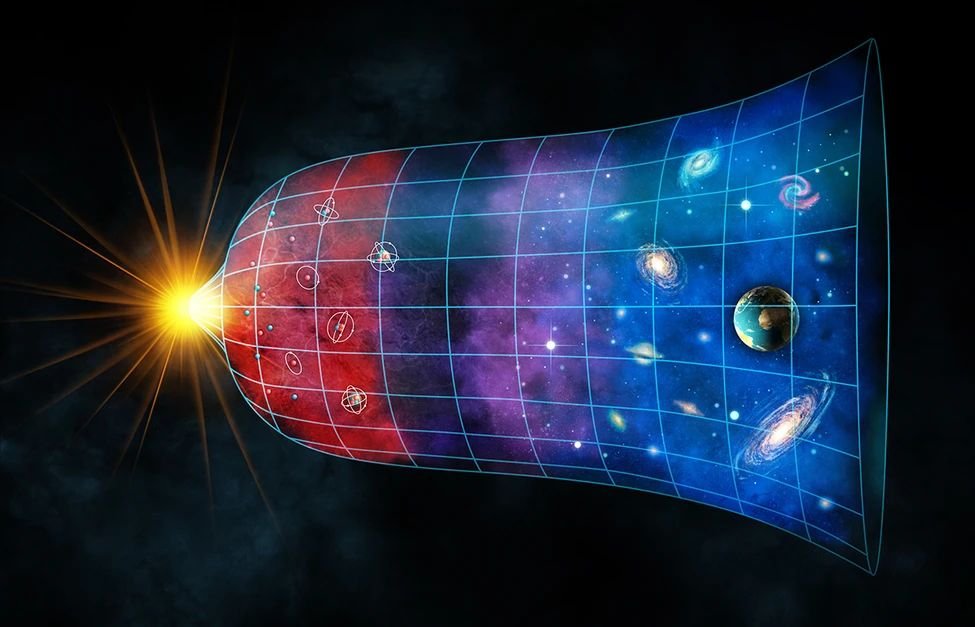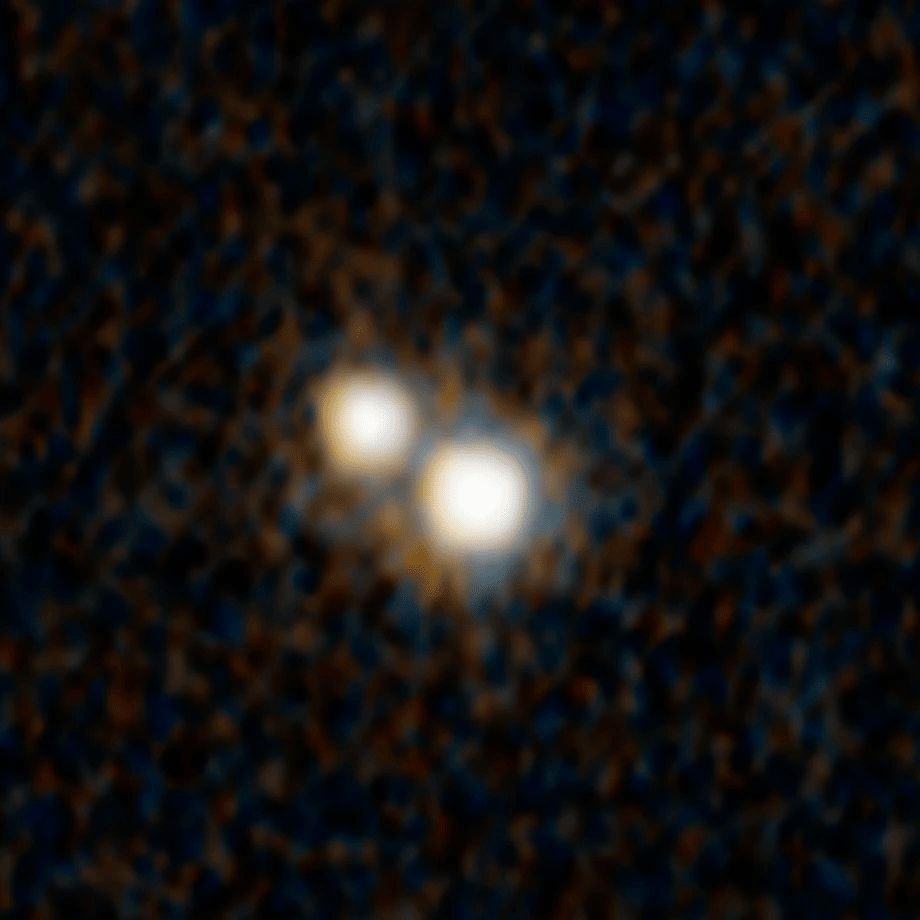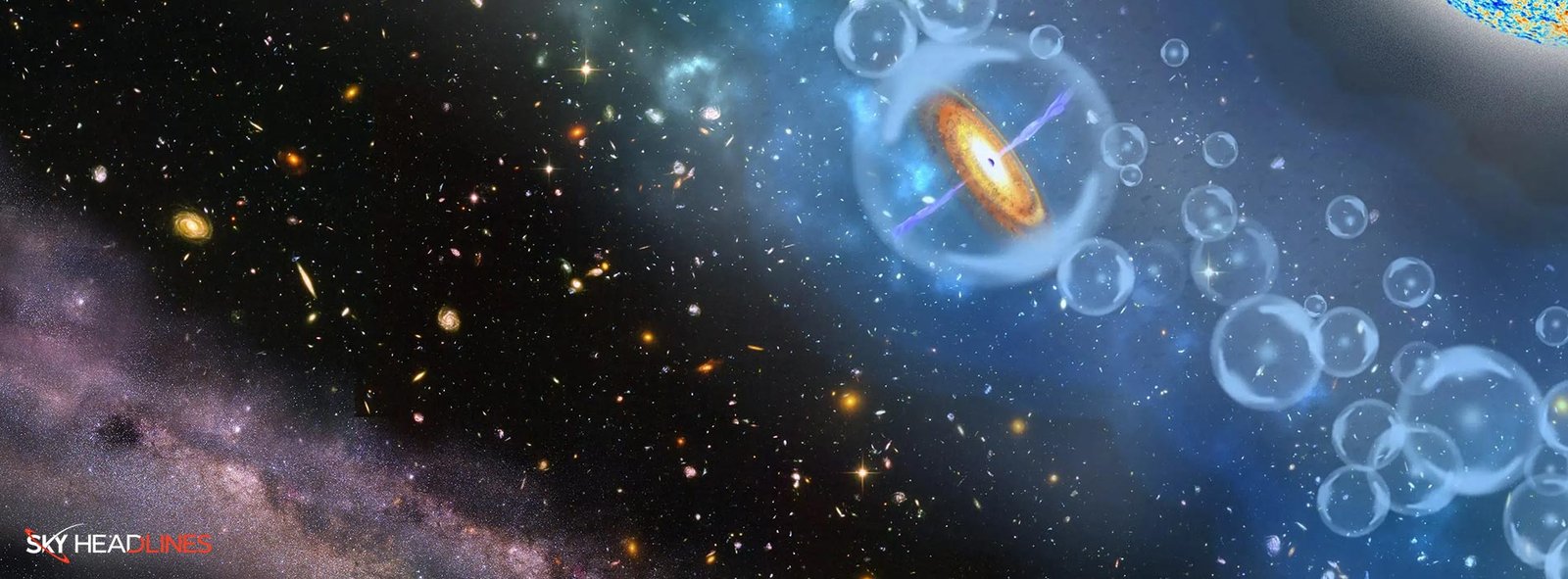Looking far into space to analyze early universe timeline means peering back in time. The more distant the object, the earlier we see the Universe’s history. This is a way to see what the Universe was like shortly after the Big Bang.
Einstein’s theory of relativity and Time’s slower movement
Albert Einstein’s famous theory, the general theory of relativity, suggests that time appeared to move slower back in those early days of the Universe compared to now. Getting a peek at this slower Universe of the past was challenging. But scientists say they’ve done it by observing intense black hole entities known as quasars.
“When we gaze back to when the Universe was just over a billion years old, time seems to be moving at a pace five times slower,” says Professor Geraint Lewis from the University of Sydney, who guided the study.
“If you were in that young Universe, one second would feel like one second. But from our perspective, over 12 billion years later, time back then appears to be in slow motion.”
The scientific journal Nature Astronomy has reported on this study. The research group analyzed data from nearly 200 quasars to draw their findings about early universe timeline. These objects are black holes situated at the core of extremely lively galaxies.
“Einstein taught us that space and time are linked. Since the Big Bang, the birth of time, the Universe has been expanding,” says Professor Lewis.

As space expands, our observations of the early Universe should reveal time moving slower than now. In this paper, we’ve demonstrated that looking back to about a billion years after the Big Bang, In the past, astronomers could glimpse the slower Universe up to around half of its current age by studying supernovae, explosive endings of big stars.
Supernova analyzing early Universe timeline
These events can serve as “standard clocks” to show that time ran slower in the early Universe. But by observing quasars, scientists have witnessed slow motion dating back to just a tenth of the Universe’s age.
Professor Lewis explains,
“Supernovae are like single flashes of light, making them easy to study. Quasars, however, are more complex, like a continuous firework display.”
“We’ve managed to understand this firework display, proving that quasars can also be used as time markers for the early Universe.”

Collaborative discovery regarding Early Universe timeline
Professor Lewis and Dr. Brendon Brewer from the University of Auckland collaborated on the discovery concerning early Universe timeline. They examined data from a large group of quasars collected over two decades. By combining measurements taken at different light wavelengths, they could determine how each quasar “ticked.” Then, they compared the expected behavior of the quasars with their actual conduct. This helped them use each quasar’s ticking to track the expansion of the cosmos.
“Thanks to this rich data, we were able to map out how the quasar clocks tick, revealing how space changes,” says Professor Lewis.
In the past, there were debates about whether quasars were cosmological objects or if the concept of an expanding universe or timeline was genuine. But, with this new data and analysis, they discovered the quasars’ elusive tick, and they behave exactly as predicted by Einstein’s theory of relativity.





